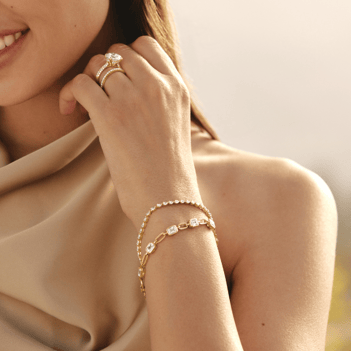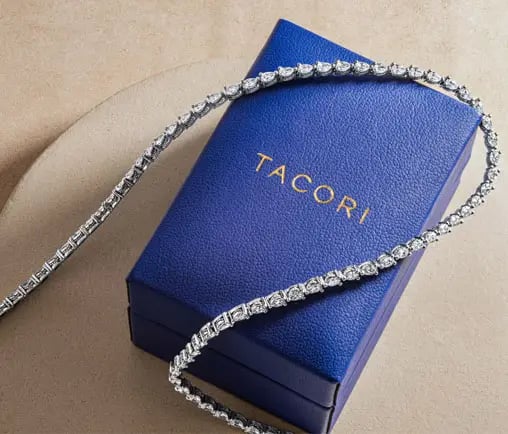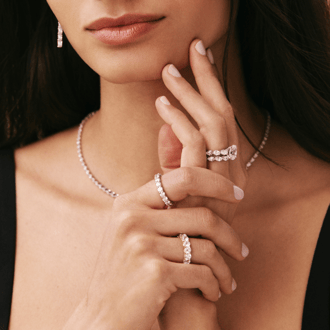-Dec-11-2023-08-40-32-1034-PM.png?height=630&name=Untitled%20design%20(3)-Dec-11-2023-08-40-32-1034-PM.png)
Discover the world of hypoallergenic jewelry and learn how to protect your skin while still looking stylish.
While you can't be truly allergic to jewelry, certain metal alloys can irritate your skin. If you've experienced redness, swelling, or itchiness where your body has come into contact with jewelry, it might be time to update you edit with hypoallergenic jewelry. Read on to learn how to find pieces that won't cause an allergic reaction.
Understanding Hypoallergenic Jewelry
Hypoallergenic jewelry refers to jewelry that is less likely to cause an allergic reaction in individuals with sensitive skin. People with sensitive skin often experience irritation, redness, or itchiness when wearing certain types of jewelry, and hypoallergenic jewelry is designed to minimize these reactions and provide a comfortable wearing experience.
The term 'hypoallergenic' doesn't guarantee that the jewelry will not cause any reaction at all. Everyone's skin is different, and what may not be an allergen for one person may still cause a reaction in another.
To determine if a piece of jewelry is hypoallergenic, you have to consider the materials used in its construction. Luckily, there are some metals that are a lot less likely to cause allergic reactions than others, and knowing what these are will help you decide not only what jewelry to buy, but also where and where not to shop for that jewelry.
Common Allergens in Jewelry
Some of the most common allergens found in jewelry include nickel cobalt. Nickel, far more than cobalt, is often used as a base metal in lower cost jewelry pieces. According to the Mayo Clinic, up to 17% of women and 3% of men are allergic to nickel; and nickel allergies tend to get worse, not better, with exposure. Many individuals who think that they are allergic to silver or gold are actually allergic to nickel, which can be present as a trace element in gold or silver produced by manufacturers who also produce white gold.
Symptoms of Jewelry Allergy
The presence of certain metals can act as allergens, causing the body's immune system to mistakenly identify them as a threat and trigger an inflammatory response. This reaction can manifest in various ways, including:
- Redness
- Swelling
- Itching
- Blistering
Jewelry allergic reactions typically appear within 12 to 24 hours of skin contact with the allergen. Sometimes, as we mentioned above, an allergy takes time to develop. On the upside, in most cases the reaction will disappear once the jewelry is removed. But be sure to see your dermatologist if symptoms persist.
The most common sites of metal allergy on on fingers, around the neck, around the wrist, and on the earlobes. Basically, where jewelry is worn.
How to Test For A Jewelry Allergy
Don't find out that you have a metal allergy the hard way. A dermatologist can perform a skin patch test, which involves placing a small amount of metal on your skin and covering the area with a patch. If you're allergic to the metal, you will develop a rash where the patch was placed.
Hypoallergenic Metals for Jewelry
Some hypoallergenic metals that are less likely to cause an allergic reaction include platinum, 18 karat gold, titanium, and stainless steel.
The purity of the metal is what makes it more or less hypoallergenic. For example, pure 24 karat gold is generally hypoallergenic. But pure gold is too soft for everyday wear, so gold alloys, such as 18K gold or higher, are mixed with other metals to increase strength. For this reason, 18 karat gold is likely to be more hypoallergenic than 14 karat gold, because the latter has a higher percentage of potential allergens.
The majority of gold jewelry on the market is made of 14 karat gold. Most gold rings, and some gold jewelry, will have a karat stamp; a small imprint that discloses the karat weight of the gold, typically '10K', '14K', or '18K'. The purity of gold, and of other metals, can also be measured in millesimal finesse.
Titanium is a popular choice for hypoallergenic jewelry because it is lightweight, durable, and resistant to corrosion. Surgical-grade stainless steel is another hypoallergenic option that is affordable and offers a sleek and modern look. Platinum is a high-quality metal that is hypoallergenic and often used in fine jewelry.

Explore 18 Karat Yellow Gold Jewelry
Platinum: The Best Hypoallergenic Metal for Jewelry
Platinum is the best hypoallergenic metal for jewelry because it is durable, beautiful, and highly inert. It doesn't readily react with other substances, including the body's natural oils and sweat, which means that it is unlikely to cause an allergic reaction even in people with sensitive skin. It is so safe, in fact, that it is often used in medical implants such as pacemakers.
Platinum is typically 90% pure, which means that there are very few impurities that could potentially cause an allergic reaction. TACORI metals are mixed in house, and our platinum is 95% pure; simultaneously increasing the value of the metal and reducing potential allergens.
Hypoallergenic White Gold
White gold is common alloyed with nickel, because of nickel's low price point. But because nickel is such a common allergen, TACORI white gold uses palladium instead. Palladium is not only hypoallergenic, but it's even more expensive than the gold itself. We want you to be able to wear your white gold engagement ring or wedding without a red and itchy finger.
Keep in mind that almost all white gold is plated in rhodium, which is generally considered a hypoallergenic metal. When your white gold jewelry is nickel-based, the rhodium plating can serve as a protective barrier between you and the allergen. But rhodium plating eventually wears off, so if you suspect that you might have, or could develop, a nickel allergy, be sure to choose white gold that is palladium-based.
Read More: Platinum Vs. White Gold
Choosing the Right Hypoallergenic Jewelry
When choosing hypoallergenic jewelry, it is essential ensure that the jewelry is nickel-free. If you're shopping online, look for terms like 'nickel-free' or 'hypoallergenic'. If you're unsure, reach out to the vendor.
One of the most important tips when shopping for hypoallergenic jewelry that is to avoid costume jewelry whenever possible, as this likely contains an amalgam of cheap and irritating materials.
Lastly, if you are unsure about the hypoallergenic properties of a specific piece of jewelry, consult with a dermatologist or allergist who can provide guidance based on your individual needs. Purchase your jewelry from trusted retailers who can verify the purity and alloys that go into each metal.
If you've discovered that you're allergic to your wedding band or engagement ring, consult your local jeweler to find out if it can be plated with a metal that you're less sensitive to.
Read More: How to Choose the Best Metal for Your Engagement Ring
Engagement Rings for Sensitive Skin
Because TACORI metals are mixed in house, we can verify with complete confidence the ingredients and the purity of our metals. Our engagement rings are both beautiful, and safe for sensitive skin.


